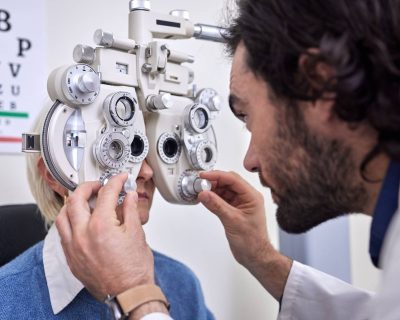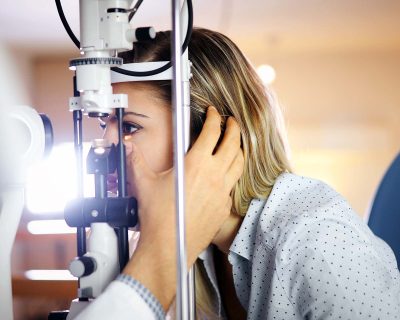
What are Floaters? Understanding the Mysterious Spots in Your Vision
Have you been seeing small dots or lines floating across your vision? They seem to come from nowhere and move around your line of sight. These little things are floaters, which can develop as your eyes change over time. Understanding what floaters are can help you learn more about your eye and about eye health. Learning about floaters can help you communicate more effectively with your optometrist when you come in for your annual eye examination and discuss your eye health.
What are floaters?
Floaters are small, dark shapes or lines that appear to float or drift across your field of vision. They can vary in size and shape, appearing as dots, circles, lines, or cobweb-like strands. Floaters tend to be more noticeable when you are looking at a bright, uniform background, such as a blank computer screen, a white wall, or a clear blue sky, or when there is a sharp distinction between light and dark. They can also become noticeable when your eyes are in motion, such as when you look around or when you move your eyes. Bright lighting conditions enhance the visibility of floaters, so you may also notice floaters more prominently after having your eyes dilated during an eye examination with your optometrist.
What causes floaters?
Eyes are complex organs composed of several components that work together to capture and process light, allowing you to see. There are several parts to your eye. When it comes to floaters, the vitreous humor is the main component involved. The vitreous humor is a gel-like substance that fills the space between the lens and the retina. It helps maintain the shape of the eye.
As you age, the vitreous humor can become more liquid and may develop clumps or strands. These clumps or strands can cast shadows on the retina, which we then perceive as floaters. Another age-related change is called Posterior Vitreous Detachment (PVD), in which the vitreous humor begins to pull away from the retina. This can cause the release of more floaters into your field of vision. PVD tends to be a common cause of floaters for older individuals.
While age-related changes are the most common causes of floaters, there are other factors that can also contribute to the development of floaters. People with nearsightedness can be more prone to floaters; since the shape of their eyeball is elongated, there is a higher risk of vitreous detachment. Trauma or injury to the eye as well as certain eye conditions can also lead to the development of floaters. Seeking the evaluation of an eye care professional can help you rule out any potentially serious underlying conditions.
Do floaters need to be addressed?
Floaters are typically harmless and a common part of the aging process. In many cases, you don’t need to do anything about floaters. Over time, they may become less noticeable as the brain adapts to their presence.
However, there are some cases in which it is important to consult an eye professional. A sudden and significant increase in the number of floaters or a sudden shower of new floaters can be a sign of a more serious eye issue. Experiencing flashes of light along with floaters may indicate mechanical stimulation of the retina. Flashes of light can be a sign of retinal tear or detachment, which should be addressed promptly. If you notice these symptoms or significant changes with your vision, it is important to seek immediate evaluation and treatment from an eye care professional.
If floaters are causing persistent discomfort, interfering with your daily activities, or causing significant distress, consulting with your optometrist can be beneficial for assessment, guidance, and potential treatment. If floaters are significantly affecting your quality of life or are associated with serious eye conditions, your eye care professional can determine the most appropriate course of action and treatment for your specific situation.
What’s next?
While the development of floaters is a part of the aging process, it is important to make sure your eyes remain healthy. Good vision is essential for daily activities and for maintaining quality of life. Regular visits to an optometrist can help you manage your vision and eye health. Visiting your optometrist annually can help keep your prescription, if you have one, current and accurate. Your optometrist can also help you detect any potential issues related to your eyes’ health early, leading to more effective treatment and better outcomes. If you haven’t already, set an appointment with your optometrist for your annual eye examination.
However, there are cases when you should promptly schedule an appointment with your optometrist, regardless of your regular check-up schedule. Learning about eye health and floaters can help you recognize the presence of abnormal floaters due to potential eye conditions. It is important to seek the help of your optometrist if you experience sudden changes to your vision, eye discomfort, or signs of eye problems.





1 comment on “What are Floaters? Understanding the Mysterious Spots in Your Vision”